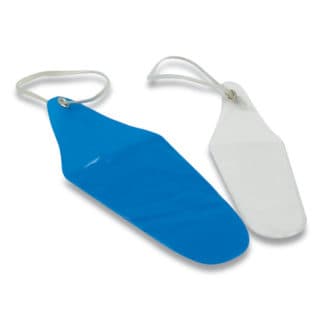Description
Finger Stall
Protection for dressed fingers/thumbs
Help keep dressings clean and dry
Loop fastening for added safety
Blue option for food and catering use
Presented in a Pack of Ten
Before applying any dressing, you should wash and dry your hands, and wear disposable surgical gloves if you have them. You should also follow the advice outlined below.
Make sure that you (or the person who is bleeding) are sitting or lying down.
Tell the person what you are doing as you apply the dressing.
If the affected area is bleeding, it should stop if you apply pressure and raise the area higher than the heart (if it’s a lower limb, lie down and raise the affected area above the level of the heart).
Use a dressing that is slightly bigger than the wound you want it to cover.
Hold the dressing at the edges, keeping your fingers away from the part that’s going to cover the wound.
Place the dressing on top of the wound – don’t put it on from the side.
A little bit of pressure on the affected area should stop it from bleeding again – but make sure you don’t restrict the circulation.
Sterile dressing pads attached to bandages
Sterile (hygienic) dressing pads come in a protective wrapping. Once they are out of the wrapping, they are no longer sterile. When applying a sterile dressing pad:
clean and dry the wound and surrounding skin
hold the bandage on either side of the pad
lay the pad directly on the wound
wind the short end once around the limb and the pad
wind the other end around the limb to cover the whole pad
tie the ends together over the pad to secure it, and put slight pressure on the wound
Dressings should be replaced on a regular basis.
If the wound is severe, apply the dressing and seek medical advice.
Plasters (adhesive dressings)
Plasters are made from a piece of gauze and have an adhesive (sticky) backing. They are usually wrapped in single sterile packs. They sometimes come in different shapes and sizes, or you can cut them to size. Some plasters are waterproof. When applying a plaster:
clean and dry the wound and surrounding skin (see How do I clean a wound? for more information)
unwrap the plaster and hold it by the protective strips over the backing with the pad side facing down
peel back the strips, but don’t remove them
place the pad on the wound, pull away from the strips, and press the edges of the plaster down
Plasters should be replaced every few hours.
A small number of people are allergic to the adhesive strips – try to find out if this is the case before applying a plaster.
Do You Have a Question about This Product – Ask Wessex





Reviews
There are no reviews yet.